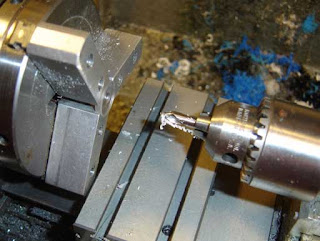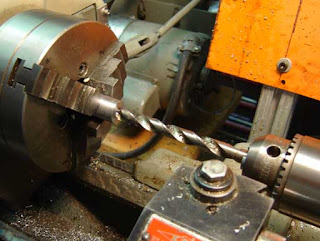Anyway, George called me up and told me to bring my Diana 75, as he wanted to show me the palm rest he made for his Anschutz .22 target rifle.
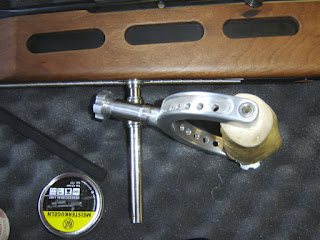
Here's his rest attached to the rail on my Diana 75.

It uses a "split cotter" to clamp the column.
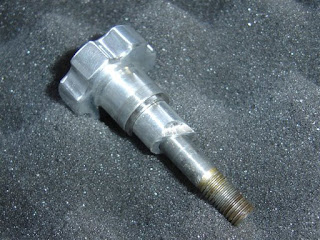
Some detail. I asked him why the tube is at an angle and he said he couldn't remember.
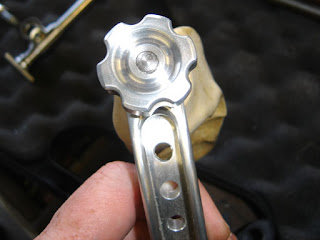
The clamp knob for the handle.
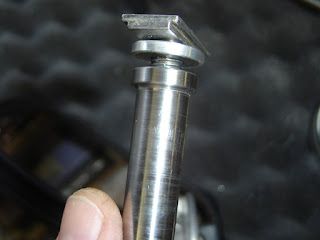
The T nut which fits in the rail.
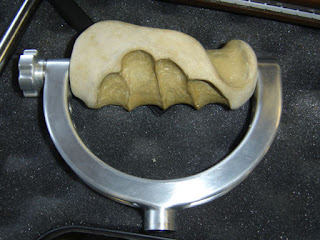
The molded handgrip.
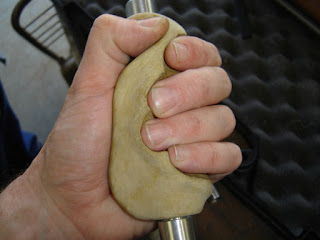
He said he couldn't remember what product he used, but it was some sort of wood putty.
Anyway, whenever George brings one of his projects by, I'm always temped to just sell all my tools and go off to live in a cave. He really does great work.
In spite of my George induced low self esteem, my unfinished 1377 carbine was chosen as "Mod of the Month" over at airgun artisans. Not sure what to make of that. This blog also received a nice mention in Tom Gaylord's column in the Volume 62, #24 issue of Shotgun News. So fame has been achieved, of a sort, yet fortune seems to not be following. I haven't acquired a new airgun in over a month and I'm going through some serious withdrawals...send me some beaters ASAP!
I really need to figure out how to get some sponsors for the blog.
I was noodling around on the internet and came across this recent Crosman patent for a front sight. Seems like an odd way of dealing with elevation adjustment. Here's an interview with Abhinav Bindra, the Gold Medalist in Air Rifle (an amazing final match!).
Back to the shop...




